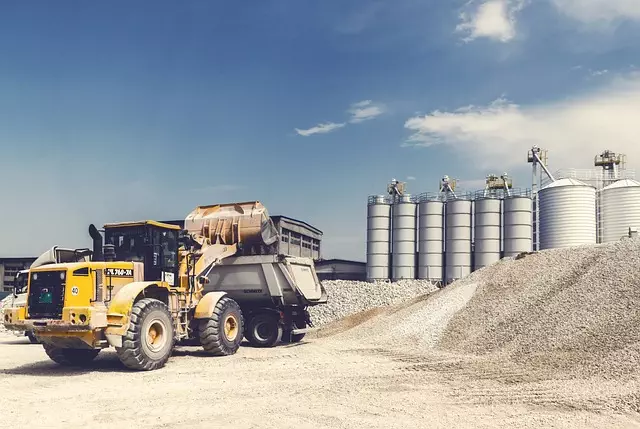In industrial hygiene, understanding pushing (direct exposure) and pulling (removal of hazards) forces is key to hazard recognition and assessment. By identifying these forces, professionals can implement strategic interventions to mitigate risks. They target pushing factors like poor design or inadequate PPE, and manage pulling forces through regular exposure monitoring and efficient ventilation systems. This holistic approach safeguards workers' health, enhances safety, and promotes a culture of compliance in diverse industries.
Pushing and pulling forces are integral aspects of industrial hygiene, influencing workplace safety and health. This article delves into the fundamental concepts of these forces in industrial settings, focusing on their role in hazard recognition and risk management. We explore various assessment methods and exposure monitoring techniques to mitigate risks effectively. Through real-world case studies, we demonstrate the practical application of force analysis in preventing occupational diseases. Additionally, best practices for implementing force control measures are provided to enhance workplace safety.
- Understanding Pushing and Pulling Forces in Industrial Hygiene
- Hazard Recognition: Identifying Potential Risks at Workplaces
- Assessment Methods for Effective Risk Management
- Exposure Monitoring Techniques to Measure Worker Safety
- The Role of Industrial Hygiene in Preventing Occupational Diseases
- Case Studies: Real-World Applications of Force Analysis
- Best Practices for Implementing Pushing and Pulling Force Controls
Understanding Pushing and Pulling Forces in Industrial Hygiene
In the realm of industrial hygiene, understanding pushing and pulling forces is paramount for hazard recognition and assessment. Pushing forces refer to the mechanisms that drive hazardous substances or conditions into contact with workers, while pulling forces act in opposition, carrying potentially harmful elements away from them. For instance, in a manufacturing setting, a chemical spill represents a pushing force, directly exposing employees to toxic fumes or irritants. Conversely, proper ventilation systems serve as pulling forces, drawing away noxious gases and maintaining a safe working environment through effective exposure monitoring.
Recognizing these forces allows occupational health professionals to implement targeted strategies. By identifying pushing forces like poorly designed workstations or inadequate personal protective equipment (PPE), they can mitigate risks proactively. Pulling forces, on the other hand, are managed through regular exposure monitoring and the installation of efficient exhaust systems or local exhaust ventilation. This holistic approach ensures that industrial hygiene practices not only address immediate hazards but also foster a continuous improvement culture, ultimately safeguarding workers’ health and well-being.
Hazard Recognition: Identifying Potential Risks at Workplaces
Hazard recognition is a critical aspect of industrial hygiene that involves identifying potential risks in the workplace. It’s a proactive approach to ensuring worker safety and health by anticipating and mitigating dangers before they cause harm. This process requires thorough assessment of work environments, tasks, and equipment to pinpoint hazards such as toxic substances, noisy machinery, or ergonomically challenging workstations.
Effective hazard recognition goes beyond simple identification; it involves evaluating the likelihood and severity of potential risks. By conducting regular exposure monitoring, employers can measure workers’ contact with hazardous substances, assess noise levels, and determine if tasks involve repetitive motions that could lead to musculoskeletal disorders. This data aids in implementing appropriate control measures, such as providing personal protective equipment, adjusting work stations, or introducing engineering controls to minimize or eliminate hazards altogether.
Assessment Methods for Effective Risk Management
In the realm of industrial hygiene, effective risk management hinges on meticulous hazard recognition and assessment. The initial step involves identifying potential hazards within a workplace setting, ranging from chemical substances to ergonomic risks. Once recognized, a comprehensive assessment method is employed to evaluate the magnitude of these hazards and the likelihood of exposure among workers. This process includes detailed inspections, consultation with experts, and the utilization of advanced technologies for exposure monitoring.
Exposure monitoring plays a pivotal role in gauging the success of risk management strategies. By regularly measuring worker exposure to various hazards, companies can ensure that control measures are effective and make data-driven adjustments as needed. This proactive approach not only protects workers’ health and safety but also fosters compliance with regulatory standards, ultimately contributing to a healthier and more productive work environment.
Exposure Monitoring Techniques to Measure Worker Safety
In the realm of industrial hygiene, ensuring worker safety is paramount, especially when dealing with potentially hazardous materials or environments. Exposure monitoring techniques play a crucial role in this regard, serving as powerful tools for hazard recognition and assessment. These methods are designed to measure and quantify an employee’s exposure to various risks, including toxic substances, noise, radiation, and extreme temperatures.
One of the primary objectives is to identify potential dangers early on, allowing employers and safety professionals to implement effective control measures. By regularly conducting exposure monitoring, companies can accurately assess whether workplace conditions comply with regulatory standards and best practices. This proactive approach not only protects workers’ health but also fosters a culture of safety and compliance within the organization, ultimately contributing to a healthier and more productive work environment.
The Role of Industrial Hygiene in Preventing Occupational Diseases
Industrial hygiene plays a pivotal role in preventing occupational diseases by identifying and mitigating hazards in the workplace. It involves rigorous hazard recognition and assessment to understand the nature, severity, and probability of potential risks associated with various tasks, materials, or environmental conditions. By systematically evaluating these factors, industrial hygienists can determine the extent of exposure among workers.
Effective industrial hygiene practices encompass exposure monitoring, which measures the levels of hazardous substances in the air, water, or other environments where employees work. This data allows for the implementation of targeted controls and interventions to reduce or eliminate risks. By integrating hazard recognition, assessment, and monitoring, organizations can foster safer working conditions, thereby enhancing employee well-being and productivity while aligning with broader sustainability goals.
Case Studies: Real-World Applications of Force Analysis
In real-world scenarios, understanding pushing and pulling forces is crucial for ensuring industrial hygiene and mitigating hazards. Hazard recognition and assessment plays a pivotal role in identifying situations where these forces could lead to injuries or exposure to harmful substances. For instance, in construction sites, workers are often exposed to heavy equipment that exerts significant pulling forces, necessitating proper safety measures and regular exposure monitoring. Similarly, in manufacturing plants, assembly lines involve continuous pushing of materials, which can lead to musculoskeletal disorders if not properly managed. By analyzing these forces, professionals can design safer work environments, implement ergonomic solutions, and establish protocols for regular hazard recognition and assessment, thereby enhancing worker well-being and preventing accidents.
Moreover, force analysis is integral to various industries where the manipulation of materials is a core operation. For example, in logistics and warehousing, the efficient movement of goods involves both pushing and pulling, requiring proper training and equipment to prevent strains and injuries. Similarly, healthcare settings must consider the forces involved in patient handling, ensuring staff are equipped with appropriate techniques to lift and transfer patients safely without causing musculoskeletal damage. Effective industrial hygiene practices, driven by force analysis, contribute significantly to creating healthier, safer work environments across diverse sectors.
Best Practices for Implementing Pushing and Pulling Force Controls
When implementing pushing and pulling force controls in a workplace, it’s crucial to follow best practices that prioritize industrial hygiene and ensure worker safety. The first step is hazard recognition and assessment. Identify tasks or equipment that exert excessive forces on employees, leading to musculoskeletal disorders (MSDs). Conduct thorough assessments to understand the nature of these hazards, their frequency, and potential impact on workers’ health. This involves observing work practices, reviewing incident reports, and consulting with employees about their concerns.
Once hazards are identified, implement exposure monitoring strategies. Use objective measures like force gauge devices or timed trials to quantify the forces workers are subjected to during specific tasks. Regularly monitor exposure levels and compare them against established threshold limits values (TLVs) for pushing and pulling forces. This data will guide adjustments to work practices, equipment design, or personal protective equipment (PPE) to minimize risks. Additionally, promote good ergonomic practices among employees, ensuring they use appropriate techniques when pushing or pulling to reduce strain on their bodies.


